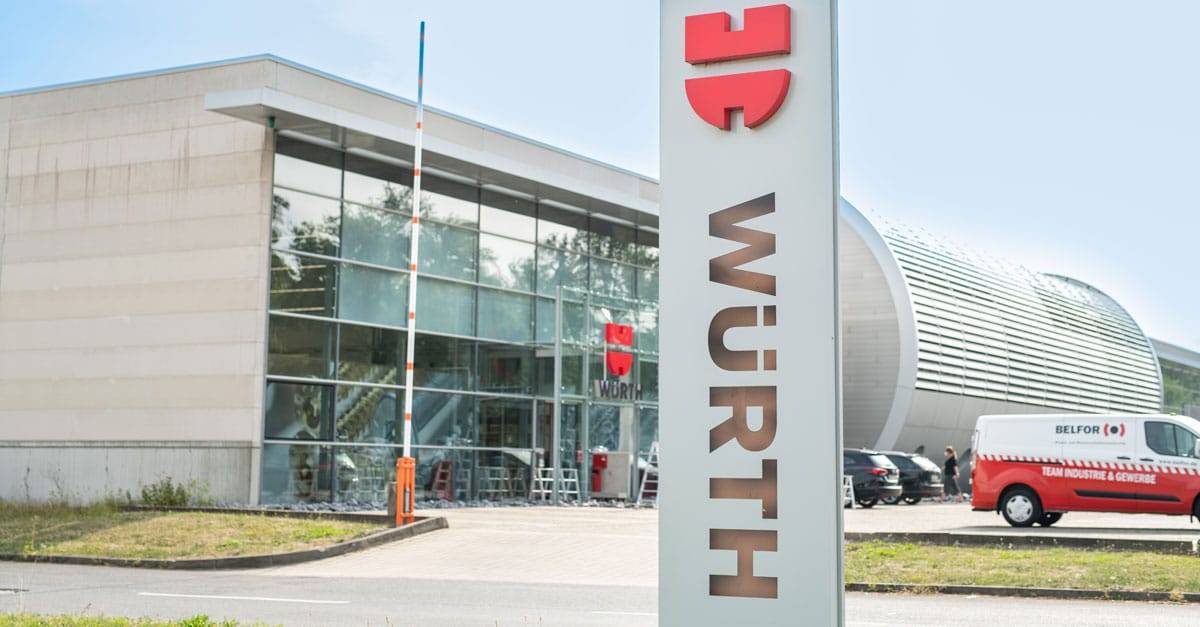Beginnings of the company
In 1945, Adolf Würth, who had been working in the industry for 20 years, founded a company for the wholesale of nuts and bolts in Künzelsau. The company was entered into the commercial register on July 16, 1945. The largest single company and nucleus of the Würth Group is Adolf Würth GmbH & Co. KG. This laid the foundation for the company we know today.
In 1962, Reinhold Würth founded the first foreign company called Würth Niederlande B.V. In the same year, companies in Switzerland and Austria were added, and the company continued to expand.
In 1986, with the acquisition of a company in Japan and the founding of its own company in Malaysia, Würth is now also present in Asia in addition to the USA and Europe.
Art and culture – a matter close to the heart
Reinhold Würth is a passionate collector of works of art and a committed supporter of culture. This passion began back in the 1970s. After 50 years, the Würth Collection owns around 20,000 works of art from over 500 years of art history and is continuously expanding. At the inauguration of the Carmen Würth Forum in 2017, Reinhold Würth encouraged the founding of the Würth Philharmonic Orchestra as a new orchestra in the area. In 2020, Museum Würth 2 was opened in the Carmen Würth Forum extension, making it the fifth art museum in Germany and the fifteenth art venue in Europe. Reinhold Würth’s most important concern is to familiarise his employees and the interested public with ideas from art, music, and literature and to arouse enthusiasm.
Better than all forecasts
The ongoing pandemic-related chip crisis has significantly increased the demand for Würth’s electronic products, such as printed circuit boards and electronic and electromechanical components. The Würth Elektronik eiSos Group, which manufactures printed circuit boards, increased its sales by 37 percent to more than EUR 1.1 billion, while electrical wholesale increased by 29 percent to more than EUR 2.8 billion. It is also argued that the high demand is also caused by hoarding purchases by customers. Würth now has more than 83,000 employees, an increase of 4,000 compared to the same period last year. Although employment growth is five percent lower than the company’s growth, this has a positive effect on profitability. The operating result rose by more than 50 percent, from 775 million euros to 1.2 billion euros.
Outlook for the future
The new research and development centre in Künzelsau was only completed last year with an investment volume of EUR 70 million. Würth hopes to increase its ability to innovate, for example, in the renovation of bridges using heavy-duty dowels or increasing autonomy. Long-term success is also to be secured through the company’s own growing production companies. “We are therefore not dependent on importing steel from China.” Friedmann, CEO of the Würth Group, explains that 80 percent of products are already manufactured in Europe.
Elevate Your Wealth Game: Empowering UHNWIs for Simplified Asset Management. Altoo Platform Preview
And this is set to continue in the future, as the proximity to development and production not only enables short and efficient information and logistics channels but also makes a significant contribution to quality and enables new market requirements to be quickly absorbed and implemented in new fastening solutions.
The Würth family has not only developed into one of the largest and oldest family-owned companies in Germany through the continuous improvement and innovation of its products but also through its passion and initiative for other areas, such as art and culture, as well as technical research.










